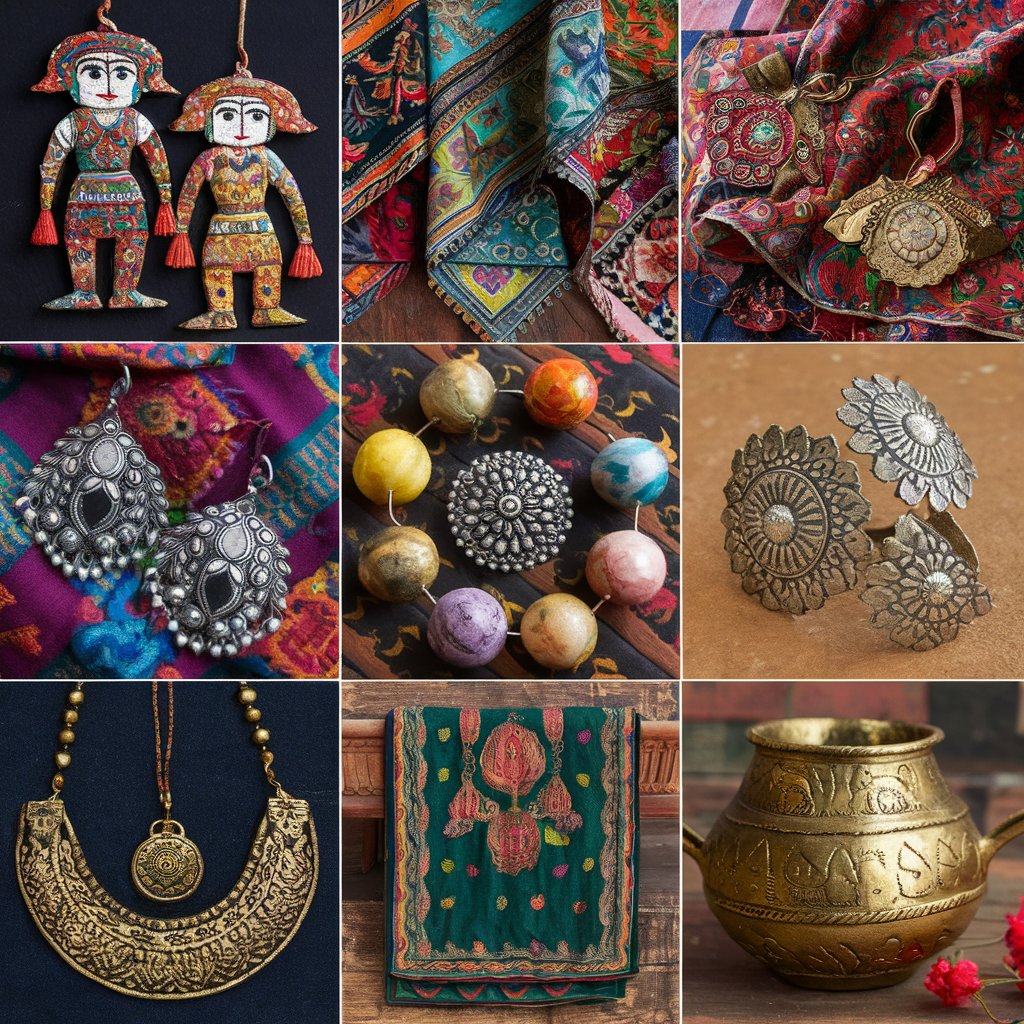Indian Handicrafts Evolved Over Different Historical Periods: A Journey Through Time
Indian artisans have created exquisite pieces that have fascinated art lovers worldwide from the ancient civilizations of the Indus Valley to the modern era. Tanutra are bringing these authentic, handcrafted Indian products to the USA and Canada, allowing people to experience the beauty and craftsmanship of these timeless creations. Indian handicrafts are a testament to the rich cultural heritage of India, reflecting its diverse history and artistic traditions.

Ancient Era: The Dawn of Indian Handicrafts
The ancient Indus Valley Civilization (c. 3300–1300 BCE) is when Indian handicrafts first appeared. This epoch is renowned for its exquisite metalwork, beadwork, and ceramic craftsmanship. The artisans of the Indus Valley demonstrated their artistic sensibilities and skills by creating elaborate jewellery, terracotta figurines, and decorative items. The exceptional degree of craftsmanship attained during this time is demonstrated by archaeological discoveries from locations such as Mohenjo-Daro and Harappa.
Classical Period: Flourishing Arts and Crafts
The classical period of Indian Handicrafts History, marked by the Maurya and Gupta Empires (circa 322 BCE–550 CE). it saw significant advancements in arts and crafts. This era was characterized by the patronage of various art forms, including sculpture, painting, and textiles. The Mauryan Empire, under the reign of Emperor Ashoka, is renowned for its stone carvings and stupas. The artisans of this period mastered the art of creating intricate stone sculptures and reliefs that adorned temples and monuments.
The Gupta period, often referred to as the “Golden Age” of India, witnessed a flourishing of artistic expression. Handwoven textiles, particularly silk and cotton, became highly sought after, and intricate embroidery and dyeing techniques, Ex-Bandhani and Ikat, were developed. Metalwork also reached new heights, with artisans producing exquisite gold and silver jewelry, as well as bronze statues of Hindu deities.
Medieval Period: A Blend of Cultures
India had the impact of several kingdoms and civilizations throughout the mediaeval era (around 600–1700 CE). It notably the Mughals, Rajputs, and Vijayanagara Empire. A complex tapestry of handicrafts was created during this century by the blending of local and foreign creative traditions.
Indian handicrafts are forever altered by the Mughal era in particular. Mughal rulers commissioned several architectural wonders, including the Taj Mahal, which is embellished with the exquisite Pietra Dura marble inlay work. They were also major supporters of the arts. This method of creating marble with semi-precious stones embedded in it became a symbol of Mughal artistry.
During this time, carpets, brocades, and tapestries with Persian-inspired motifs became more popular, contributing to the textile industry’s continuous boom. The skill of miniature painting also blossomed, producing vividly coloured and minutely detailed pictures from mythology, the royal courts, and nature.
Colonial Era: Adaptation and Resilience
Indian handicrafts saw tremendous transformations throughout the colonial era, which lasted from around 1757 to 1947 CE. Traditional crafts were threatened by modernization and the flood of machine-made items during British rule. Indian craftsmen, on the other hand, endured and adjusted, sustaining their trade with ingenuity and fortitude.
Movements like the Swadeshi Movement, which promoted the use of locally produced goods, supported the resurgence of traditional crafts at this time. Textiles made by hand, like Khadi, have come to represent independence and opposition to colonial control.
Modern Era: Global Recognition and Innovation
Indian handicrafts have been increasingly popular across the world in the post-independence era. To encourage and assist traditional craftsmen, organisations and initiatives have been developed. In the present day, traditional methods and cutting-edge designs have come together to create a distinctive fusion that appeals to both home and foreign markets.
Because of their beautiful workmanship and cultural significance, handicrafts like Jaipur ceramics, Pashmina shawls, and Madhubani paintings have become highly sought for. In order to ensure that the tradition of Indian handicrafts endures, e-commerce sites such as Tanutra are essential in introducing these genuine, handcrafted goods to a worldwide market.
The Procedure and Steps Involved in Making Indian Handicrafts
Creating Indian handicrafts involves a meticulous process that combines traditional techniques with artistic creativity. Here are the general steps involved:
- Designing: The process begins with designing, where the artisan conceptualizes the pattern or motif for the craft. This step involves sketching and planning the layout of the design.
- Material Selection: The next step is selecting the appropriate materials, such as clay, wood, metal, fabric, or natural fibers. The choice of material depends on the type of craft being created.
- Preparing the Materials: Raw materials are prepared for crafting. For instance, clay is kneaded to remove air bubbles, wood is seasoned, and fabric is pre-treated for dyeing.
- Crafting: This is the core step where the actual crafting takes place. Artisans use various techniques such as carving, weaving, painting, or molding to create the desired item.
- Embellishment: Many handicrafts are adorned with intricate details and embellishments. This could involve adding embroidery, beadwork, or inlaying stones.
- Finishing: The final step involves finishing touches, such as polishing, dyeing, or adding protective coatings to enhance the durability and appearance of the craft.
- Quality Check: Each piece is carefully inspected for quality and any imperfections are corrected to ensure the final product meets high standards.
Conclusion
With Tanutra, discover the classic elegance and skill of genuine Indian handicrafts. Beautiful handcrafted items that honour India’s rich cultural legacy are featured in our selection. Take a trip to Tanutra today and return with a piece of history that defies tradition and time.
